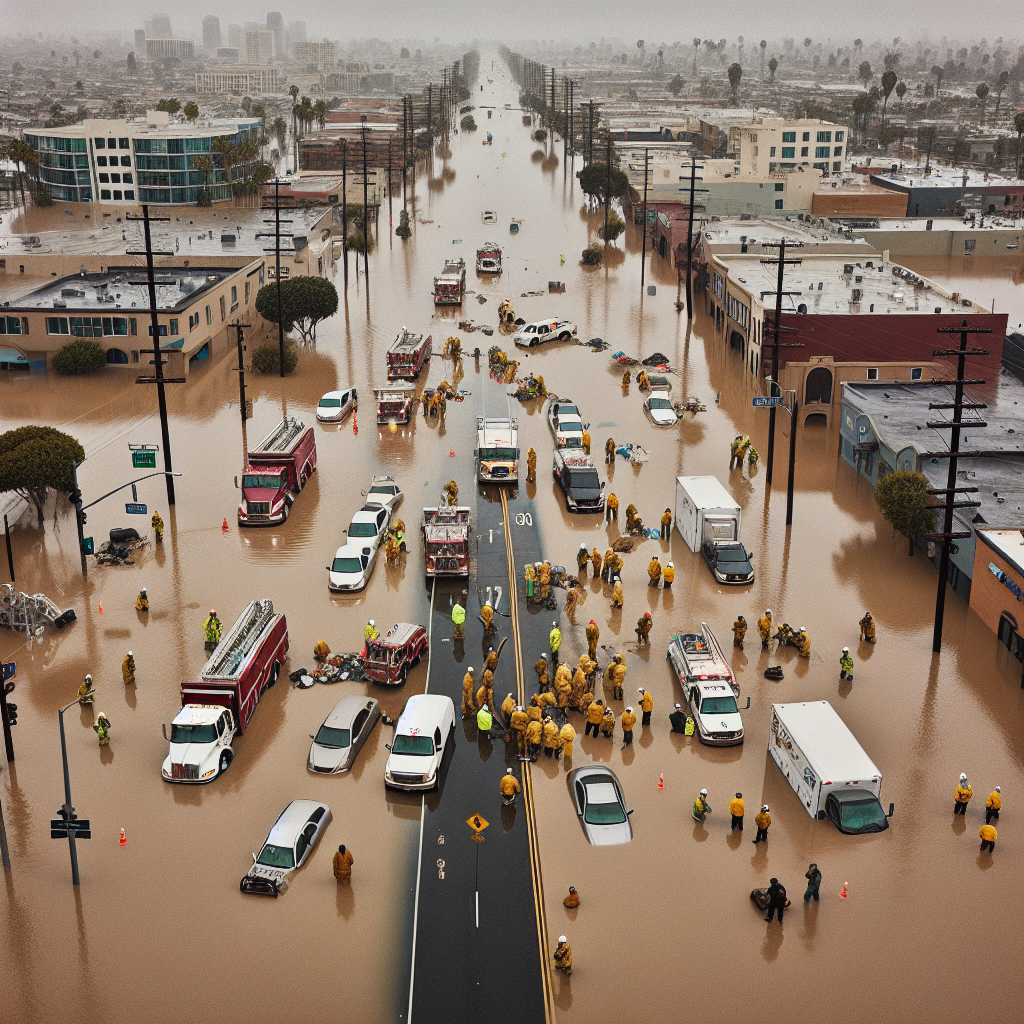Understanding the Severity and Impact of San Diego Flooding
Flooding in San Diego, a phenomenon that typically grabs the headlines during the rainy season, is a multifaceted issue with far-reaching consequences. Geographically blessed with an enviable coastal location and an often ideal Mediterranean climate, San Diego is not a place many associate with severe weather. However, it is certainly not impervious to the havoc flooding can wreak. Over the years, various parts of the city and county have been overwhelmed by floodwaters, leading to property damage, disrupted infrastructure, environmental concerns, and public safety emergencies.
Climatic and Geographical Contributions to San Diego’s Flood Risks
San Diego’s precarious positioning in regards to flooding stems partly from its climate and topography. The region experiences a semi-arid to arid climate with most of its rainfall occurring between December and March. During these months, intense storms can result from atmospheric conditions such as pineapple express or the rare instance of an atmospheric river aiming towards this section of the southern California coast.
The topographical layout amplifies the risk posed by these downpours. Coastal plains give way to valleys, canyons, and a series of mesas. Urban development in floodplains—areas naturally designed to absorb excess water—has significantly heightened the susceptibility of the city to flooding events. Further inland, mountainous regions yield rapidly to valleys and urban centers, which creates an environment in which water can flow downhill rapidly and with little natural absorption.
Historical Context of Flood Events in San Diego
San Diego has a notable history of flood events with varied causes and impacts. Historical data records instances where heavy rains have led to riverine flooding, while other events are characterized by flash floods or urban flooding due to overwhelmed stormwater systems.
The mighty San Diego River and its tributaries have occasionally overflowed their banks following periods of intense rainfall, affecting adjoining neighborhoods. Also engendering flooding are the several smaller streams running through the city, which can quickly turn from tame trickles into hazardous torrents when storms arrive.
Meanwhile, human-induced alterations such as the channelization of rivers and overdevelopment on coastal areas also play a role in occurrence and exacerbation of these flooding incidents.
Human Impact on Flood Management and Mitigation Efforts
Urban development has come at a steep cost for San Diego when addressing flood concerns. As noted earlier, natural floodplains have been heavily built upon in this sprawling metropolis which reduces the ground’s ability to soak up rainwater. This necessitates an increased dependence on an aging stormwater infrastructure that sometimes cannot cope with the volumes of water produced during storm events.
Efforts to manage and mitigate flooding in San Diego have had varying degrees of success. Sandbags, flood walls, and temporary barriers are often deployed in vulnerable areas; however, such stopgap measures are typically reactive rather than proactive. Likewise efforts to rehabilitate and improve storm drains and channels are recurring points in public discourse after notable flooding events.
Comprehensive flood management strategies that include landscape restoration, better urban planning practices that respect natural flood mechanisms, green infrastructure projects to enhance absorption within urban layouts, alongside continued infrastructure improvements are among potential long-term solutions being considered or implemented.
Contemporary Issues Related to Flooding in San Diego
Today, San Diego faces unique challenges precipitated by more frequent extreme weather due to climate change. Enhanced by warmer ocean temperatures—the ‘new normal’ includes unpredictably powerful storms that do not align with historical patterns previously used for urban planning procedures regarding flood management strategies.
The sustainability of existing practices is questioned – not only by environmentalists but increasingly so by affected communities and policymakers—prompting discussion around adopting holistic approaches towards landscaping that harmonizes more closely with natural hydrological cycles.
Notes
*Image description: A bird’s-eye view photo focusing on a typically bustling area of San Diego inundated with murky brown floodwaters reflecting gray overcast skies above – empty streets apart from scattered groups of emergency personnel attending to submerged vehicles and securing perimeter barriers along water-swollen streetsides.*
